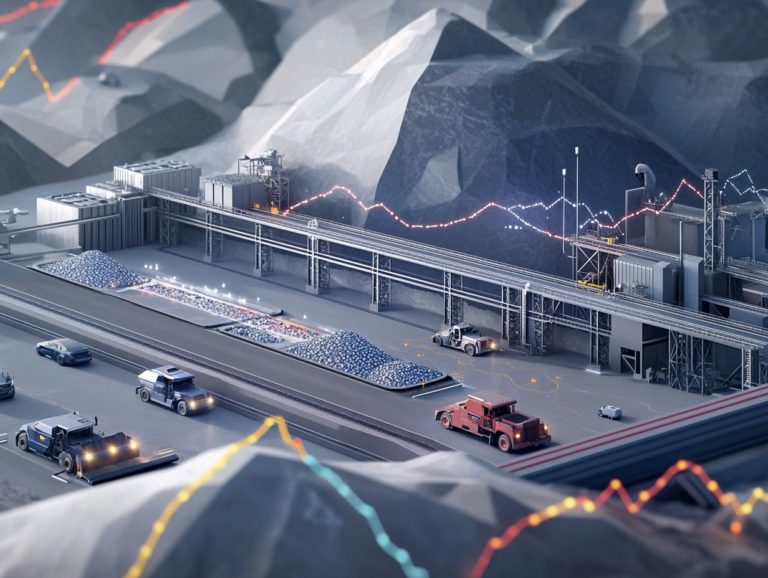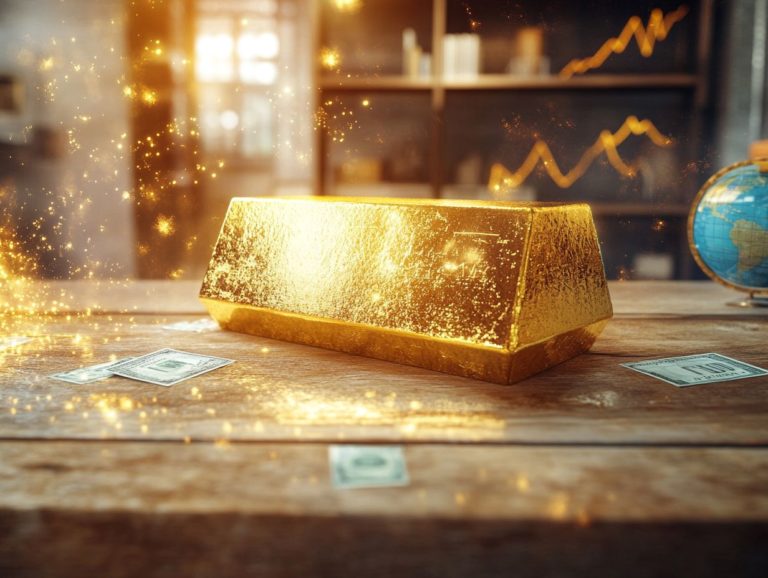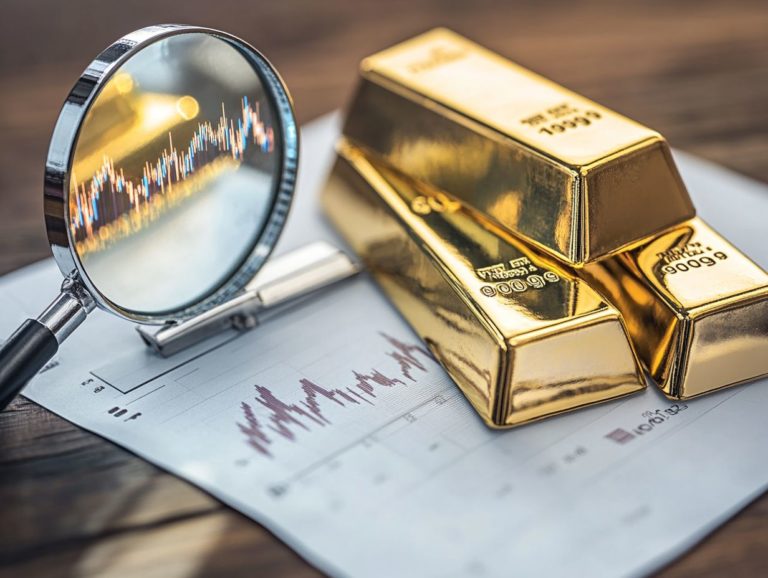The Future of Silver Investments
Silver investing has piqued the interest of both seasoned investors and newcomers, offering a compelling opportunity in today’s dynamic financial landscape.
With its rich history and a market that mirrors current economic trends, silver presents unique advantages, including diversification and the potential for attractive returns. However, it s essential to acknowledge the risks involved, particularly market volatility.
This exploration will delve into the intricacies of silver investing, covering its historical context, current state, various investment strategies, and future outlook.
Uncover why silver may be the asset you’ve been seeking.
Contents
- Key Takeaways:
- History and Current State of the Silver Market
- Benefits of Investing in Silver
- Potential Risks of Silver Investments
- How to Invest in Silver
- Future Outlook for Silver Investments
- Frequently Asked Questions
- 1. How is the silver market doing right now?
- 2. How has the COVID-19 pandemic affected silver investments?
- 3. Is silver a reliable investment for the future?
- 4. What risks should I be aware of when investing in silver?
- 5. What alternative ways can I invest in silver?
- 6. What are some indicators to look out for when considering the future of silver investments?
Key Takeaways:
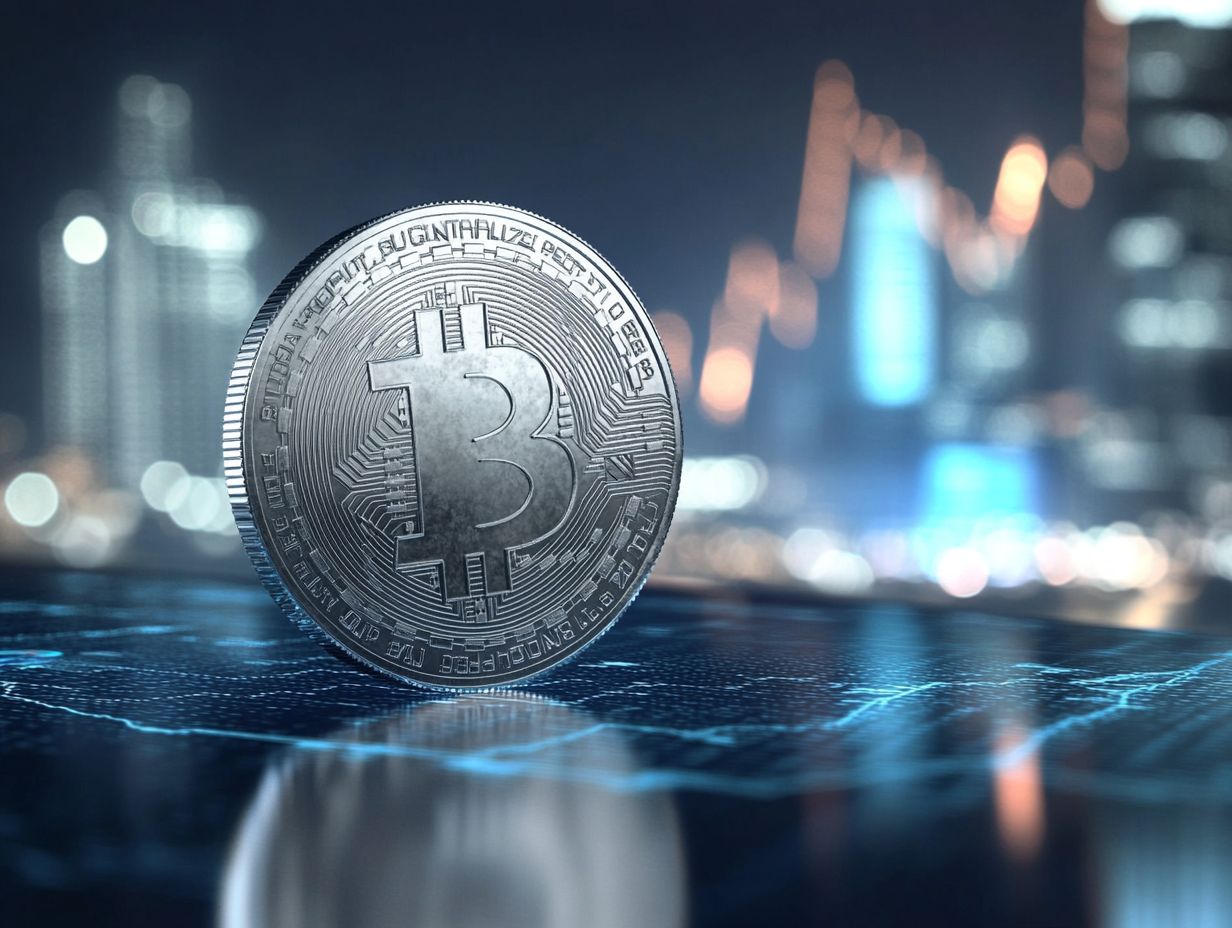
- Silver is a popular investment option due to its historical significance and current market trends.
- Investing in silver can diversify your portfolio and unlock exciting potential returns, but it comes with risks such as market volatility.
- The future of silver investments looks promising, with predicted growth and various investment strategies available for individuals to explore. Act now to capitalize on silver’s growing importance in the market!
What is Silver Investing?
Silver investing means investing your money into acquiring silver as a financial asset, whether by purchasing physical silver bullion, investing in silver exchange-traded funds (ETFs), or acquiring shares in mining stocks. This precious metal holds substantial promise for both wealth preservation and appreciation, especially in the face of fluctuating economic conditions and rising inflation concerns. It s an appealing choice for you, whether you’re a retail investor or an institutional one, looking to diversify your portfolio.
What sets silver apart from other investment options, like gold, is its unique advantages. Its multifaceted demand in industrial applications contributes to its price stability, making it a standout choice. Silver’s affordability makes it easier to enter the market than gold.
You can explore a variety of opportunities in silver coins and rounds, as well as enhance your investment strategy through leveraged positions in silver futures or options. As the silver market continues to evolve, its liquidity and growth potential remain enticing to savvy investors like you, who are eager to optimize their wealth-building endeavors.
History and Current State of the Silver Market
The history of the silver market stretches back thousands of years, transforming from a form of currency into a vital precious metal for both investment and industrial uses. For centuries, silver has been revered not just as currency but also as a symbol of wealth and stability.
As of May 2023, you ll notice the silver market undergoing significant shifts, driven by industrial demand from solar panels to lithium-ion batteries while also contending with supply constraints and changing price dynamics.
Key Events and Trends
Recent key events impacting the silver market include Central Bank actions and geopolitical uncertainty, which have significantly influenced silver prices and investor sentiment. As market trends shift, you ll want to keep a keen eye on these developments to make informed price forecasts and investment strategies, especially with rising industrial demand and the evolving economic landscape at play.
The interplay of geopolitical tensions think conflicts and trade disputes has introduced volatility, prompting many investors to seek refuge in silver as a safe haven. Central Banks adjusting interest rates and employing quantitative easing have also been pivotal in driving demand. Add to that the technological advancements in sectors like electronics and renewable energy, and you have a recipe for intense market dynamics.
Together, these factors not only shape current prices but also inform your future strategies for investing in silver. As sentiment shifts with each new piece of data and global development, staying informed will be your best ally in navigating this complex landscape.
Are you ready to explore how silver can enhance your investment portfolio? Dive into the silver market today and discover your investment potential!
Benefits of Investing in Silver
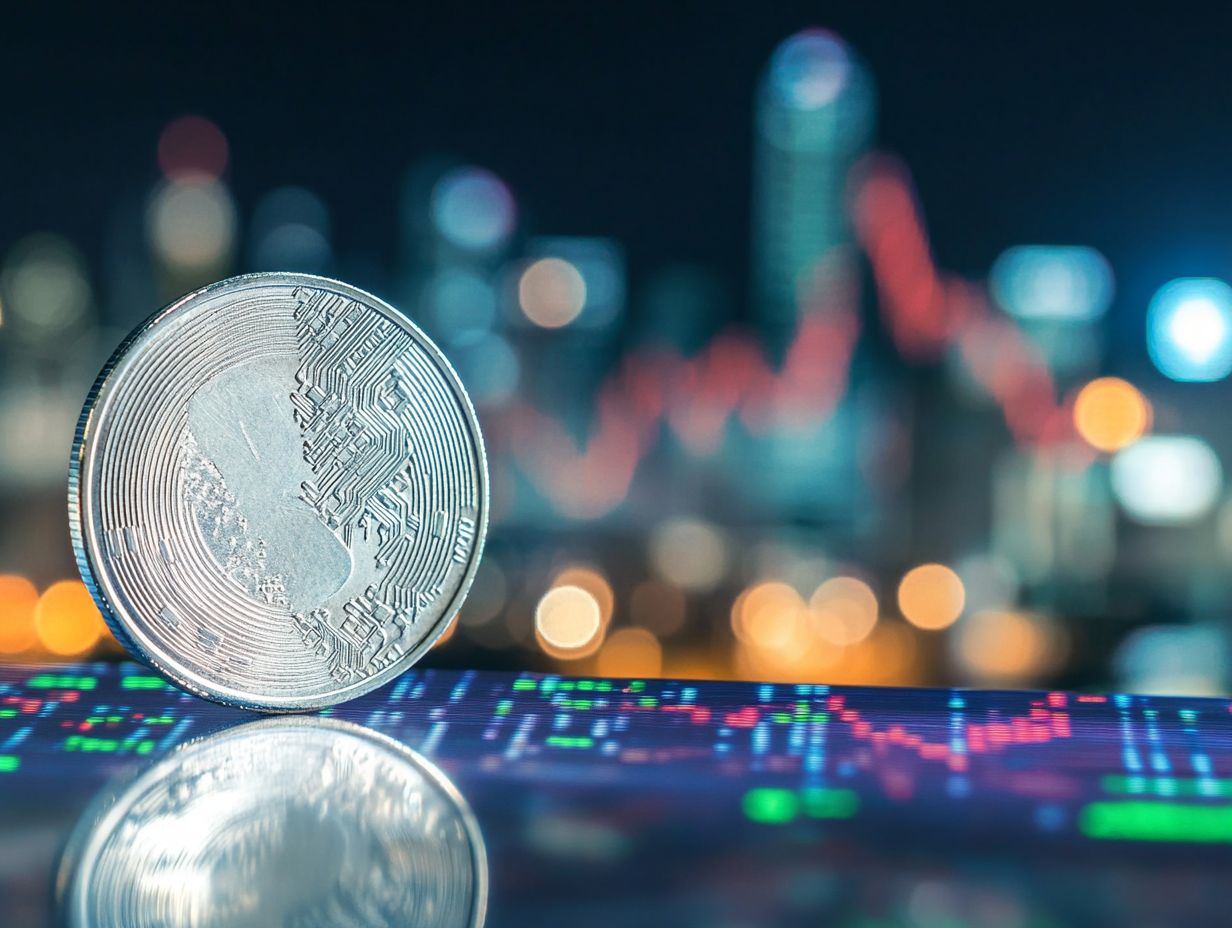
Investing in silver presents a wealth of advantages. It helps spread out your investments and provides a hedge against inflation concerns that frequently impact financial markets.
With growing demand for silver fueled by both investment and industrial uses, coupled with a potential supply deficit from mining constraints, this precious metal emerges as a compelling opportunity to enhance your investment strategy. Understanding the history of silver as an investment can also help reduce risks.
Diversification and Potential Returns
Diversification stands as a fundamental principle in your investing journey. Silver offers a unique opportunity to embrace this by showcasing distinct price movements compared to assets like gold.
The silver market is changing. You might see better returns during good trading days, influenced by factors such as industrial demand and shifting consumption patterns. To understand how these dynamics affect your investments, check out the historical performance of silver investments. This makes silver an effective addition to a well-rounded investment strategy.
Incorporating silver into your investment portfolio helps mitigate risks associated with market volatility and economic fluctuations. Its dual identity as both a precious metal and an industrial commodity means silver often behaves differently than traditional stocks and bonds, making it important to understand the risks and rewards of silver investing.
You might consider strategies like dollar-cost averaging, which means investing a fixed amount regularly, regardless of the price, or investing in silver ETFs to gain exposure without the complexities of owning physical silver. By staying informed about global technological advancements that impact silver demand, you can further enhance your portfolio’s performance. Understanding the role of silver in a diversified portfolio showcases how silver preserves wealth and holds the potential for attractive returns.
Potential Risks of Silver Investments
Investing in silver offers a wealth of benefits, but it s crucial to stay informed about market changes. Being proactive can help you avoid unexpected losses linked to market volatility and price fluctuations. Various economic conditions can influence these changes.
For instance, alterations in industrial demand, shifts in Federal interest rates, and prevailing investor sentiment can dramatically affect the silver market. For those who aren t prepared, this volatility might lead to unexpected losses.
Being informed and vigilant is key to navigating this landscape successfully.
Market Volatility and Other Considerations
Market volatility is a crucial aspect for you to consider as a silver investor. Price targets can swing dramatically based on shifting economic growth rates and the ever-changing focus on geopolitical events. Grasping these factors is vital for crafting effective trading strategies and minimizing risks linked to silver investments.
This price fluctuation can be driven by various elements, including alterations in monetary policy, inflation rates, and the unique supply-demand dynamics of precious metals. Staying attuned to global economic indicators and political tensions is essential, as these can trigger sharp price movements in the silver market.
To navigate this volatility successfully, you might often find yourself relying on:
- diversification
- employing risk management techniques
- utilizing technical analysis for knowledge-based decision making
By keeping a close watch on market sentiment and adjusting your portfolio accordingly, you can significantly enhance your ability to capitalize on silver s sometimes unpredictable nature.
How to Invest in Silver
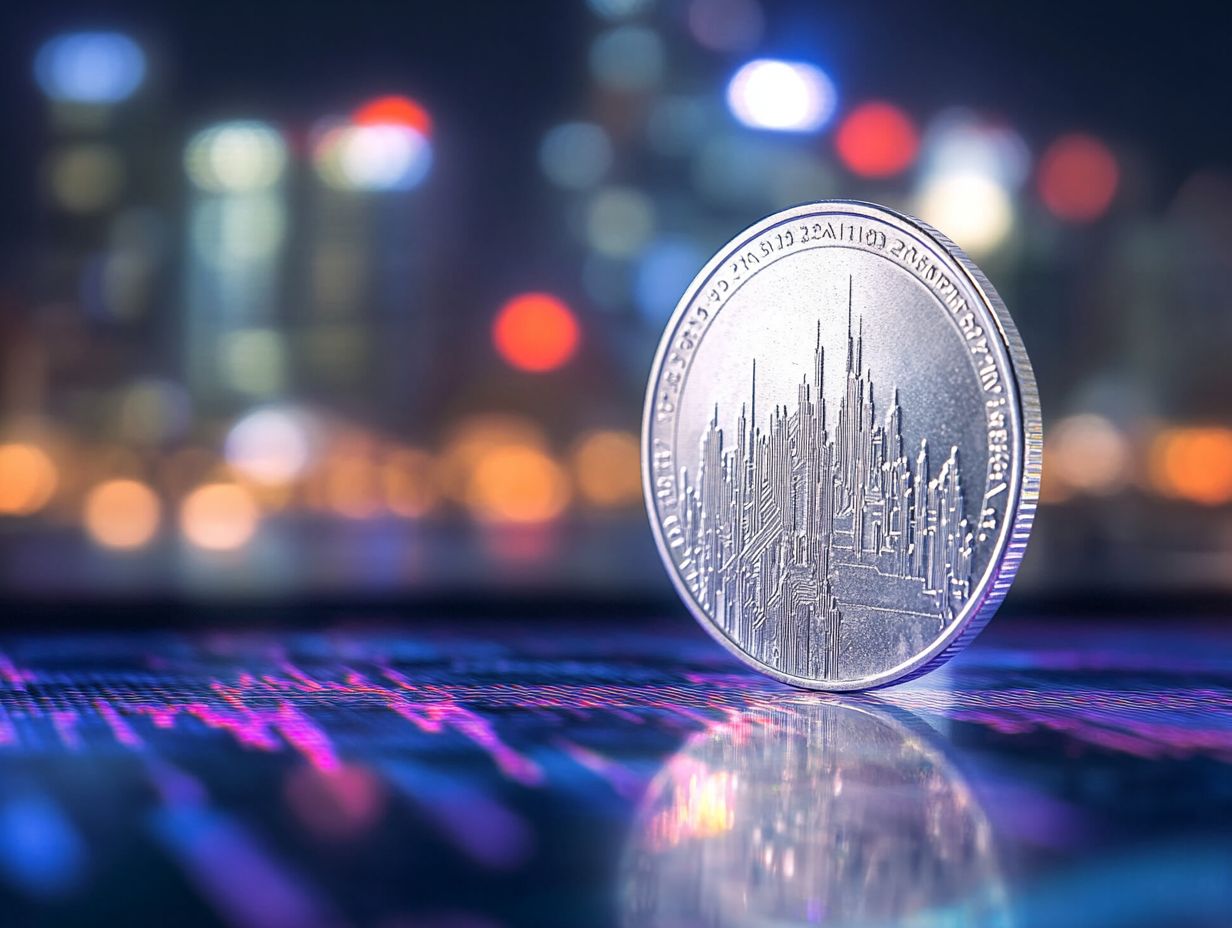
You’re in for a treat! Investing in silver offers many exciting strategies, from purchasing physical silver bullion to investing in silver exchange-traded products, or even acquiring shares in mining stocks. Each approach carries its own set of benefits and risks, allowing you to tailor your investment based on your preferences.
As the landscape of silver production and market supply continues to shift, it’s essential for you to evaluate your chosen method in light of your financial goals and the prevailing market conditions, using the top silver investment strategies for guidance.
Different Methods and Strategies
You have several compelling options for investing in silver, including buying silver bullion, investing in silver exchange-traded funds (ETFs), and purchasing shares of silver mining stocks. Each of these methods caters to different investor preferences and market outlooks, allowing you to gain exposure to the silver market while carefully balancing risk and potential returns.
Each strategy boasts unique characteristics tailored to diverse financial goals. For instance, buying silver bullion provides you with tangible assets. However, it requires secure storage and comes with premium costs. Investing in silver ETFs offers liquidity and ease of trading, but you’ll need to account for management fees and the lack of physical ownership. Additionally, to understand the market better, keeping an eye on the future of silver is crucial. Purchasing shares of silver mining stocks might yield significant rewards if the companies perform well, yet it also carries risks tied to operational challenges and market volatility.
By understanding these varied strategies, you empower yourself to make informed decisions that align with your risk tolerance and investment horizons.
Future Outlook for Silver Investments
The future outlook for your silver investments is brimming with potential, fueled by increasing demand and expected supply constraints that could shape pricing trends.
As you approach 2024, it’s essential to keep a keen eye on market trends and engage in price predictions. For instance, understanding the role of technology in silver investment allows you to seize potential opportunities within this dynamic sector of precious metals.
Predictions and Factors to Watch
Predictions for the silver market depend on various factors, including economic conditions and investor attention on commodity prices. Understanding these elements is essential for navigating the ever-evolving landscape of silver investments with confidence.
The overall health of the global economy, rising inflation rates, and fluctuating interest rates play pivotal roles in shaping market sentiment. As central banks adjust their monetary policies, the demand for silver as a hedge against inflation may rise or fall, directly impacting its price. Understanding the future of silver in the digital age can provide valuable insights into these trends.
Technological advancements in sectors like renewable energy and electronics are opening new avenues for silver consumption, potentially leading to unexpected market trends. It’s wise to monitor geopolitical developments; tensions in key mining regions can disrupt supply chains and further influence market dynamics.
By staying attuned to these factors, you can make more informed investment decisions that enhance your portfolio’s performance.
Frequently Asked Questions
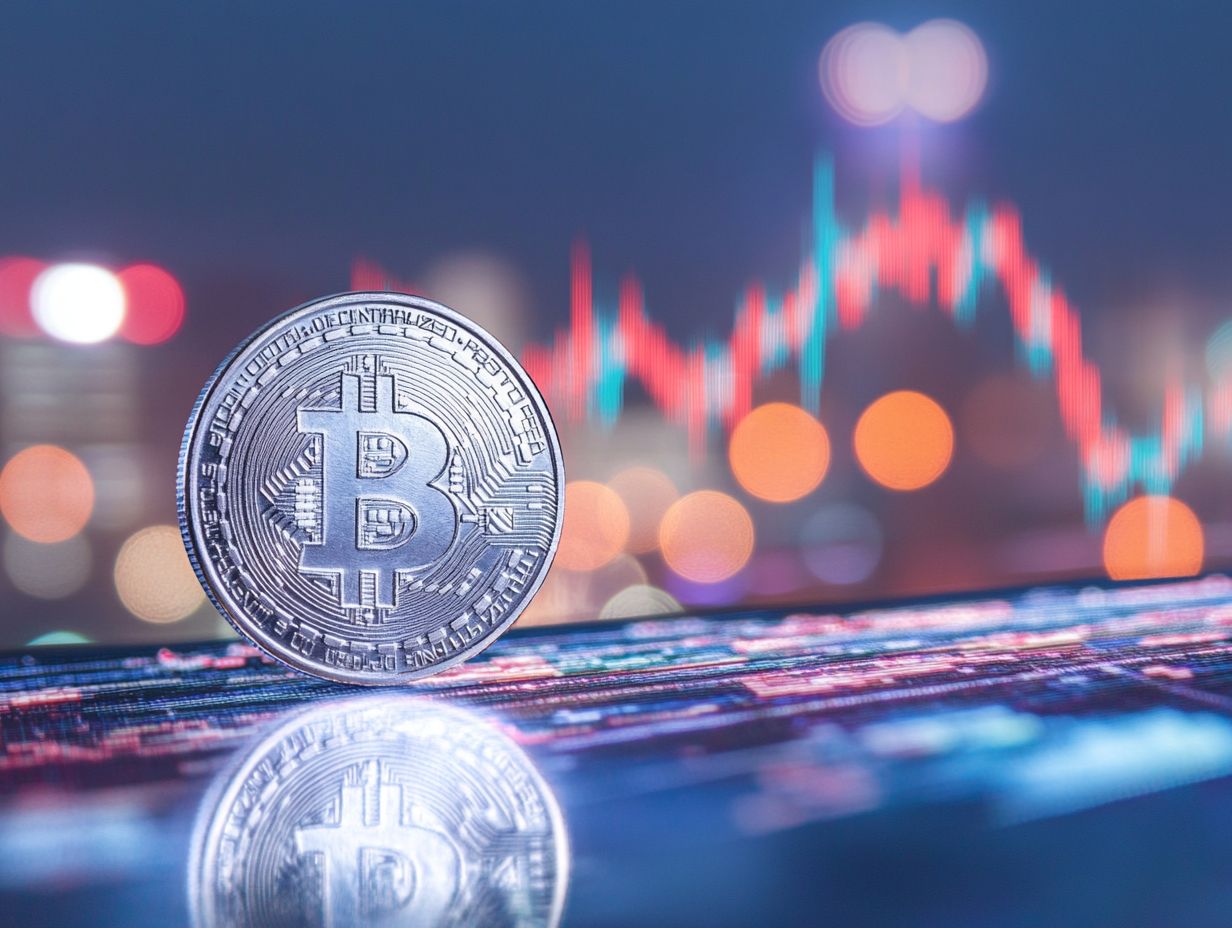
1. How is the silver market doing right now?
The current state of the silver market is relatively stable, with prices hovering around $25 per ounce. However, increasing demand for silver in various industries, such as electronics and solar panels, suggests a promising future for silver investments.
2. How has the COVID-19 pandemic affected silver investments?
The pandemic caused economic uncertainty, leading to a decrease in industrial demand for silver. However, government stimulus measures and the return of industrial activity post-pandemic are expected to drive up demand for silver, making it a lucrative investment option.
3. Is silver a reliable investment for the future?
Silver is considered a safe investment because of its high liquidity and historical stability. As a tangible asset, it can provide a hedge against inflation and economic turmoil, making it a solid choice for long-term investments.
4. What risks should I be aware of when investing in silver?
Like any investment, there are risks involved in investing in silver. Prices can be volatile, and returns are not guaranteed. Additionally, geopolitical and economic factors can impact the demand and price of silver in the future.
5. What alternative ways can I invest in silver?
Besides purchasing physical silver, investors can consider silver mining stocks or exchange-traded funds (ETFs) that track silver’s performance. These options provide a more diversified and potentially profitable approach to investing in silver.
To stay informed, consider subscribing to updates or consulting a financial advisor to navigate the silver market effectively.
6. What are some indicators to look out for when considering the future of silver investments?
When looking at silver investments, pay attention to demand in various industries.
Government rules and the overall economy will also influence your decisions.
Staying informed about these factors can empower you to seize opportunities in silver investments.











